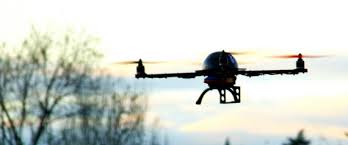From catastrophes like the Japanese tsunami to Hurricane Sandy closer to home, governments as well as individuals are deploying a range of mobile technologies in preparing themselves for natural disasters and responding to public and private safety issues.
Mobile Communications
There are at present in excess of 6 billion cellphone users on the planet, and mobile technology is increasingly being used as an efficient and effective means of reaching rural and urban populations when disaster strikes. New safety programs are being funded by the government so that incidents like the Virginia Tech shootings and a string of others, where students did not have access to the appropriate technology to protect themselves, are not repeated.

Disaster Kits
A disaster kit is in essence a collection of items that you and your family can use in the eventuality of some kind of natural disaster striking your area. The kit should be put together well in advance of any emergency taking place, because it might be the only thing you can grab before being forcefully evacuated by state troopers.
You may well have to make do with your own resources in the aftermath, so things like water, food and other supplies need to be able to last you at least for 72 hours following the strike. Relief workers and local officials might arrive promptly at the scene but they won’t be able to reach all those affected immediately, and it has been known for help to turn up days later.
A number of companies specialize in disaster prevention, such as that run by Catherine Hooper, which has a growing list of customers who intend to be fully prepared when disaster strikes and don’t want to take any chances. Her own house in Manhattan is stocked with a variety of tech gadgets, from solar power chargers and flashlights to anti-radiation suits and potassium iodide tablets, all within easy reach in case of any emergency.
Tech Kit
- There’s a lot of useful tech kit on the market nowadays that you can keep in a handy pack that’s easily accessible at a moment’s notice.
- A flashlight and extra batteries are always useful in the event of a power cut and to help see when treating wounds.
- A hand crank radio means you don’t need electricity to work it, as in very damp conditions (such as flooding) the batteries may not last long or even work at all.
- Keep a spare cell phone in a protective pack, along with a solar charger or inverter so you don’t have to rely on regular power supplies.
Conclusion
Climate change and population growth are two major factors that have an impact on the increasing numbers of people affected by natural disasters every year. More of us in the US are taking advantage of technology such as drones controlled by cell phones, so that when a disaster like the flooding in New Orleans strikes we’ll be prepared for the consequences.

